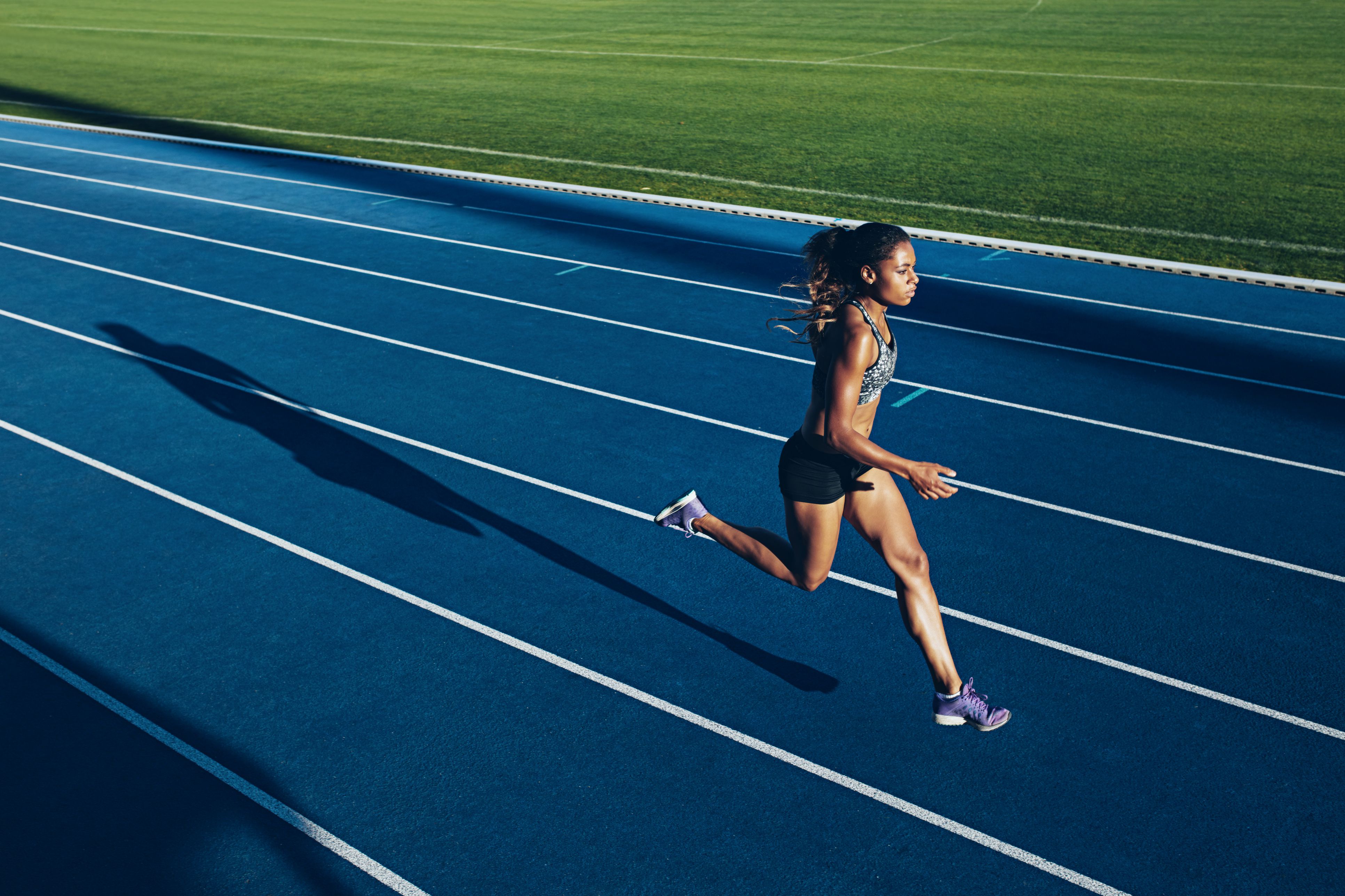
Many have been the endeavors to foresee run execution based on various tests. So as to anticipate run execution, these tests ought to explicitly evaluate the capacities that influence execution at given periods of the run. The point of this examination was to inspect the connection between the exhibitions at increasing speed (ACC), and maximal running (MAX) dash stages, and bounce chosen factors [distance, GRF, speed, power, and motivation, in supreme and relative terms (weight and height)]. Twenty-two male sprinters were surveyed for five bounce tests: Squat Jump (SJ), Counter Movement Jump (CMJ), Drop Jump (DJ), Repeated Vertical Jumps amid ten seconds (vRJ10), and 5 level hops (5hJ). The best dash indicators to ACC and MAX are a file between the even separation and the 5 contact occasions from 5hJ. The outcomes are positive to the utilization of different factors next to separate bounced (GRF, speed, power, and drive) and furthermore take in thought the variable with respect to body weight and stature.
Presentation:
Accomplishment in run occasions is controlled by three central points; (1) the competitor’s capacity for quick speeding up, (2) the ability to achieve a high running speed, and (3) the ability to keep up speed against the beginning of weariness. The more noteworthy the dimension of power and the quicker that constraint is connected to the ground in each walk, the better will be the dash.
Many have been the endeavors to anticipate dash execution based on various tests that for the most part assess the quality and power capacities. So as to foresee run execution. These tests ought to explicitly evaluate (as far as development design, states of power creation, muscle gatherings) those physical capacities that influence execution at given periods of the run: the begin from the squares, speeding up (ACC), and maximal running (MAX).
Bounce tests are routinely utilized by mentors to screen preparing progress in run competitors with separation hopped being typically the main measure that is considered [1, 2, 3, 4, 5, 6]. In any case, in a game like run running, different factors adjacent to remove bounced [ground response constrain (GRF), speed at take off, power, and drive, both taken in supreme greatness or identified with body measurements (for example Weight and height)], can give valuable information as indicators of execution and pointers of wellness level.
The point of this examination was to inspect the connection between the execution amid two periods of the dash running (ACC, MAX) and chose factors [distance, GRF, speed, power, and drive, in outright and relative terms (weight and height)], from five distinctive hop tests: Squat Jump (SJ), Counter Movement Jump (CMJ), Drop Jump (DJ), Repeated Vertical Jumps amid ten seconds (vRJ10), and 5 flat hops (5hJ).
A few creators have endeavored to discover connections between dash (or run stages) and diverse sort of tests (to gauge muscle quality). The distinctive philosophies utilized on those examinations have turned the correlations troublesome basically due to the diverse kind of muscles activities utilized. We can discover considers analyzing the connections among run and stretch-shortening cycle (SSC) tests (Mero et al., 1981; Nesser et al.1996; Kukolj et al. 1999; Hennessy and Kilty, 2001; Berthoin et al. 2001; Bret et al. 2002); run and isokinetic tests (Alexander, 1989; Guskiewicz et al.1993; Blazevich and Jenkins, 1998; Dowson et a. 1998); and dash and isometric tests (Mero et al., 1981; Young et al.1995).
We can infer that the objective of relationship concentrates to locate the best quality indicators to a run exhibition is troublesome. It ought to be noticed that relationships can just give affiliations (solid or powerless) and not cause – impact.
Our choice to pick the tests was identified with the objective, legitimacy and unwavering quality of the tests. The squat bounce (SJ) and LegPress have been portrayed as a proportion of leg touchiness in concentric and isometric conditions The Isometric dynamometry is a standout amongst the most mainstream strategies for surveying neuromuscular capacity in-game science as it allows the assessment of both pinnacle power and rate of power advancement.
The countermovement bounce (CMJ) evaluated leg control in long SSC, the drop hop (DJ) and the 5 flat advances (5hj) a proportion of short SSC performance. Their outer legitimacy in the athletic appraisal is as yet a subject of discussion (Wilson and Murphy, 1996). While a few creators have discovered a noteworthy connection between’s isometric pinnacle power or rate of power advancement and execution of dashing (Mero et al., 1981; Young et al., 1995), others have neglected to locate a critical connection between static proportions of neuromuscular capacity and dynamic execution (Wilson et al.,1995; Kukolj et al., 1999). The point of this investigation was to analyze the connections between the dash run and the outcomes got in like manner quality and power tests, which measure the ability to create the drive in isometric, unadulterated concentric and SSC withdrawal modes, to segregate run limit.
 Bring Your Best You Your No.1 Healthy Lifestyle Blog
Bring Your Best You Your No.1 Healthy Lifestyle Blog



